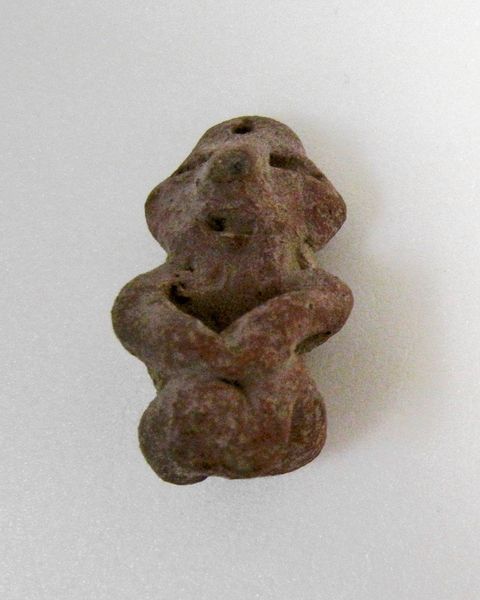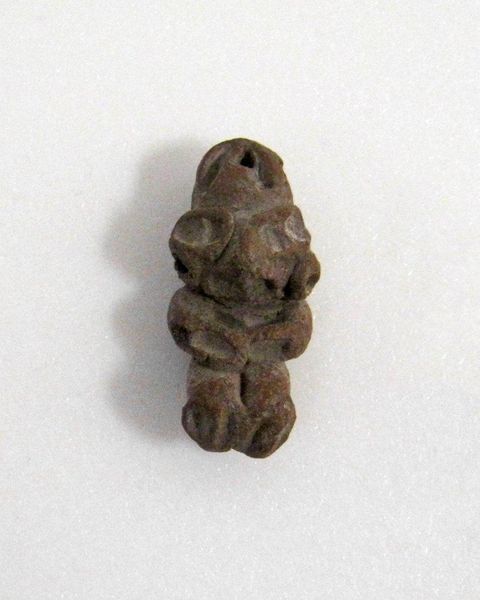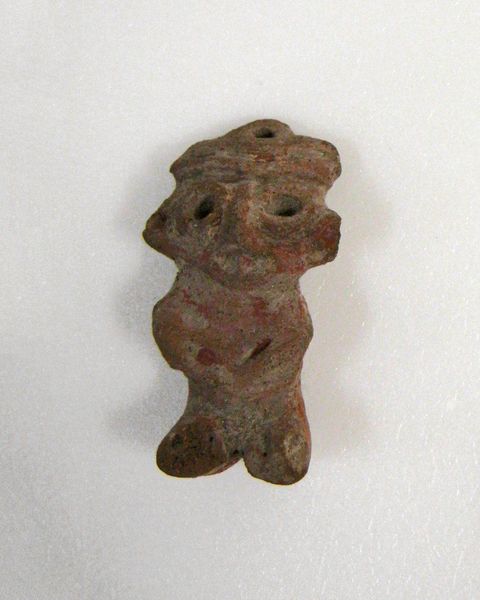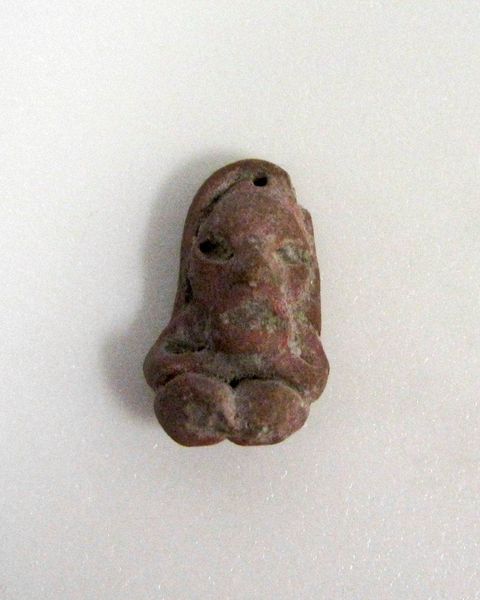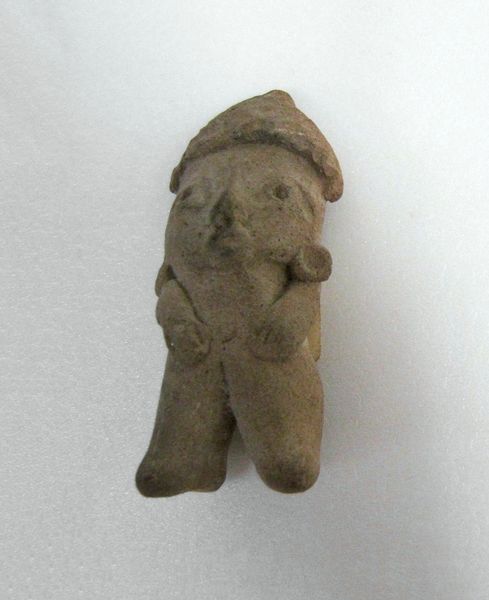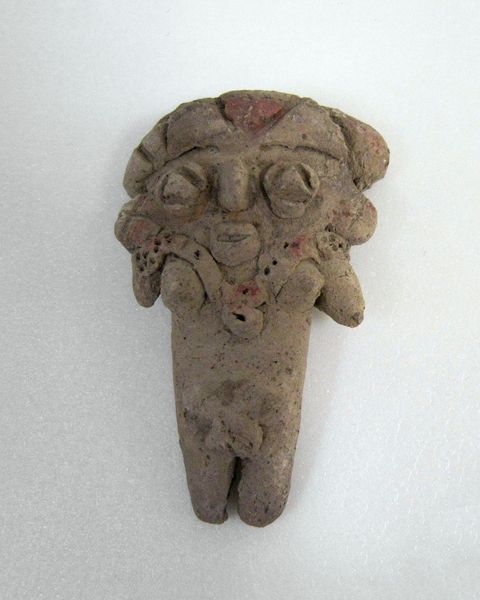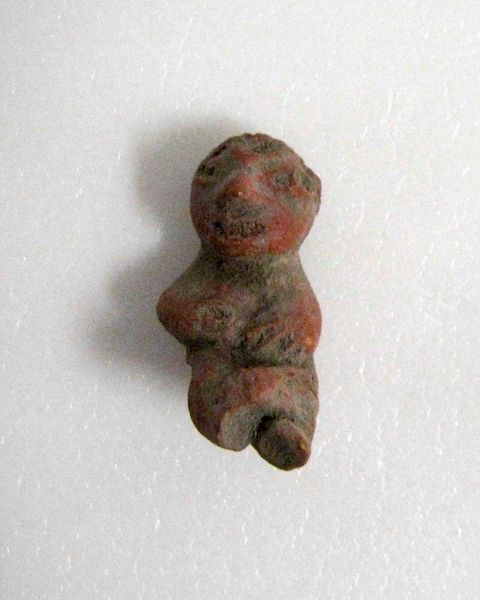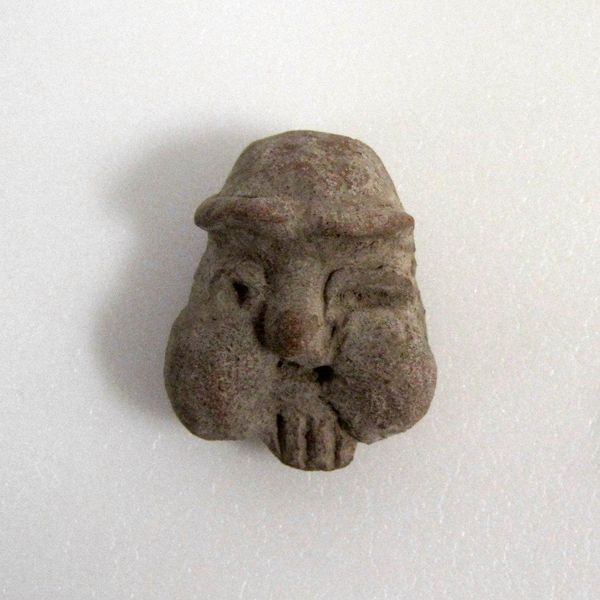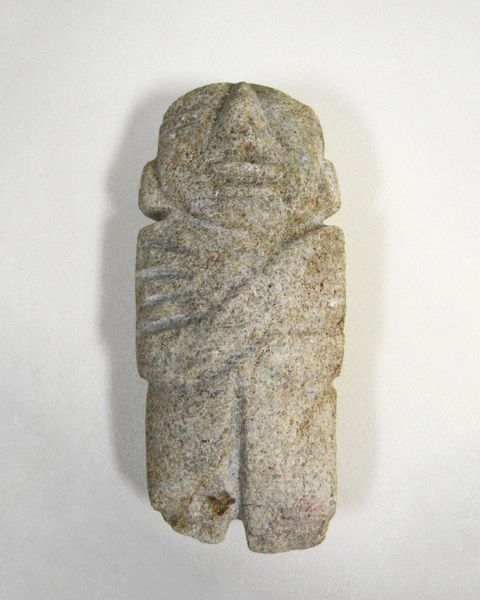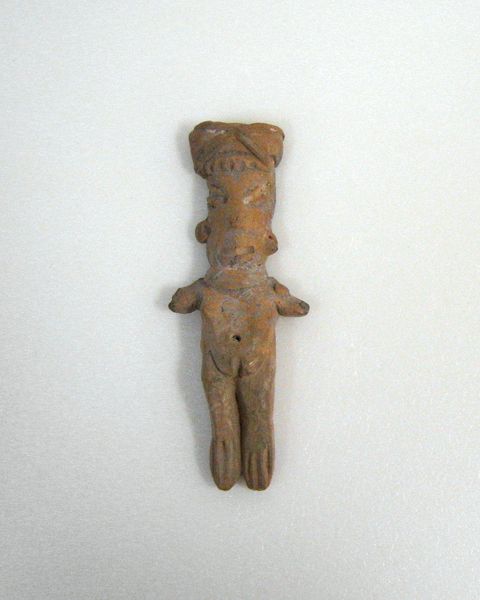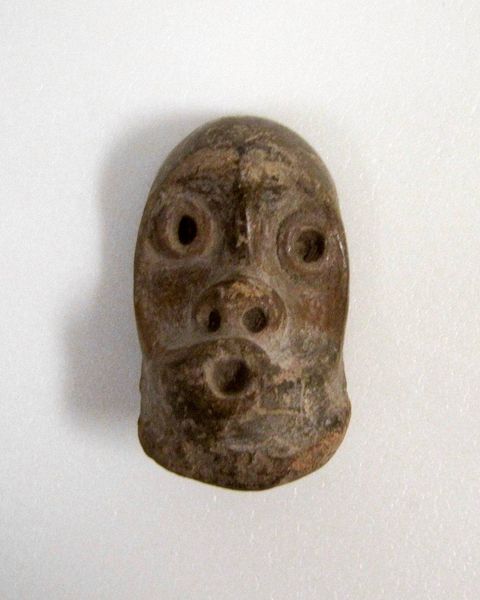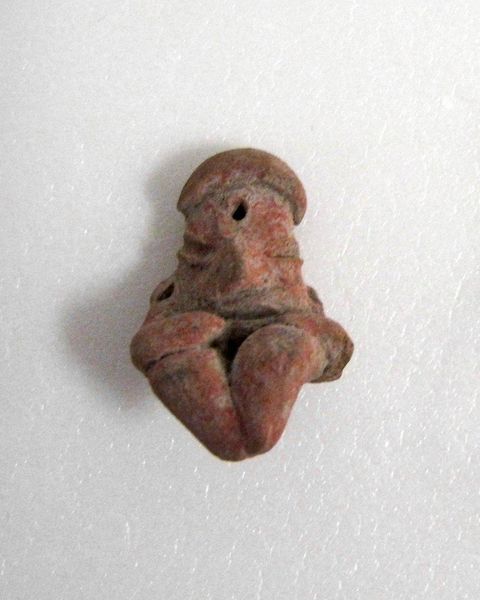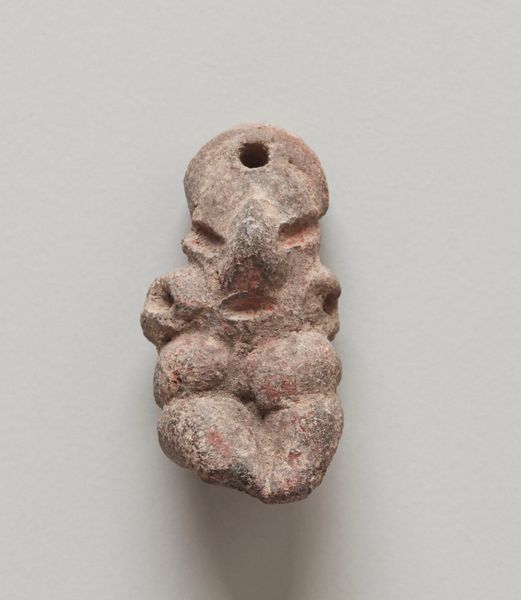
ceramic, earthenware, sculpture, terracotta
#
sculpture
#
ceramic
#
figuration
#
earthenware
#
sculpture
#
terracotta
#
indigenous-americas
Copyright: Public Domain
Curator: Here we have a Miniature Figurine created around 1500 by the Tlatilco culture. The piece, currently housed at the Minneapolis Institute of Art, is earthenware. What strikes you about it? Editor: Well, I’m immediately drawn to its almost brutal simplicity. The modeling is rough, direct—and it’s rather heavy-looking, given that it's fired clay. I find myself wanting to touch it, to understand its density. Curator: Density is interesting considering the context. Tlatilco figurines like this one weren’t created as isolated “art objects” but as items probably integrated within rituals or placed in burials. How does this affect your read? Editor: Knowing that, I examine the piece's structure in a new light. The stylized features of the body and face hint at deeper meanings. What’s most noticeable is the subtle play of light and shadow that articulates the figure’s mass. Curator: Right. If we consider it through a material lens, the creation of this figurine involved readily available resources like earthenware clay—shaped not by sophisticated machinery but by hand. Each mark a residue of its maker. Editor: You make me think that the handwork creates this intimate encounter, don't you think? Each thumbprint on the clay documents labor, both human and creative, that ultimately emphasizes the tangible form, don't you agree? Curator: Absolutely, from a maker perspective, it serves to illustrate not only artistry but perhaps aspects about ancient social practice as it pertains to daily life, and belief system as well. There's a tension in the material and the object that begs discussion, wouldn't you agree? Editor: Precisely! This approach to material elevates something so fundamentally simple—a fired piece of earth—into an eloquent expression of selfhood or cultural symbolism from centuries ago. This reflection of the material to a culture brings its narrative together! Curator: By recognizing how intertwined object creation and utilization were to ancient civilizations, we come closer to appreciating both the function and artistic impulse it inspired. Editor: Yes. Examining it, it is impossible to simply decode this earthenware work as a symbol, sign, or formal assemblage independent of a culture or historical position that gave it shape. Thank you!
Comments
No comments
Be the first to comment and join the conversation on the ultimate creative platform.
